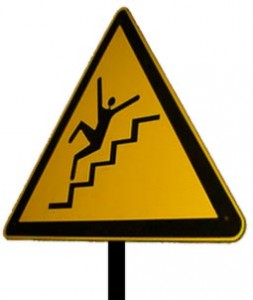Were you called “clumsy child” a lot growing up? It’s probably not your fault. Dyspraxia (or apraxia) is a neurological disorder that makes it difficult for people to make their bodies behave. Clumsiness, frequent stumbling, having a hard time focusing or remembering instructions- these are all symptoms that people with dyspraxia have to cope with all their lives.
What is Dyspraxia?
 “Clumsy child syndrome” or dyspraxia is a mild form of apraxia, a neurological disorder that makes it difficult for people to plan and execute physical actions like jumping, carrying items, or standing in line without stumbling or dropping.
“Clumsy child syndrome” or dyspraxia is a mild form of apraxia, a neurological disorder that makes it difficult for people to plan and execute physical actions like jumping, carrying items, or standing in line without stumbling or dropping.
Dyspraxia is also called motor learning disability and development co-ordination disorder (DCD). People with dyspraxia might have difficulty walking without stumbling, catching a ball, or learning new skills, but that does not mean they are less smart than others are; they are able to learn the same things as other people, only at a slower rate.
What causes dyspraxia?
There are two main kinds of dyspraxia- dyspraxia that occurred because of a stroke or other illness, and developmental dyspraxia, which is inherited from birth. Scientists don’t know what causes developmental dyspraxia, and there is no cure.
Approximately 10% of all people have some basic level of dyspraxia, although only 2% have severe dyspraxia. About 75% of all dyspraxia sufferers are male.
What are the symptoms of dyspraxia?
Children and adults with developmental dyspraxia may exhibit the following symptoms:
 Poor coordination
Poor coordination- Disorganized
- Slow reflexes
- Difficulty dressing himself and tying his shoes
- Tripping while going up and down stairs
- Frequently bumping into furniture
- Dropping things
- Inability to compete in sport-like activities, like jumping, playing hopscotch, and catching, throwing or kicking a ball
- Difficulty processing thoughts
- Poor concentration
- Overly affected by stimuli like scents, noise, and tactile sensations
- Inability to filter out stimuli
- Difficulty in learning new skills- low learning curve
- Finds being in a classroom overwhelming, but is able to learn with a personal tutor
- Difficulty learning math skills
- Difficulty following instructions and remembering them later
Famous successful people with dyspraxia
Developmental dyspraxia is not a form of brain damage, and it does not reflect one’s intelligence. In fact, many of the world’s greatest thinkers have suffered from dyspraxia. Below are some famous people who have learning disorders like dyspraxia , and some who are rumored to be among the many sufferers of this disorder.
 Daniel Radcliffe
Daniel Radcliffe- David Bailey (An English photographer whose subjects included The Beatles and The Rolling Stones)
- Richard Branson (the billionaire who owns the Virgin Group
- Bill Gates
- Robin Williams
- Einstein (although many rumor that he had Asperger’s disorder)
- Marilyn Monroe
- Stephen Fry
- Isaac Newton
- Emily Bronte
- Picasso
- Mozart
- Ernest Hemingway
- George Orwell
How does this relate to vitamin B12 deficiency?
Vitamin B12 deficiency and apraxia symptoms both include similar neurological disorders; gait disorders like difficulty walking, jumping, and running, decreased hand-motor coordination, and frequent clumsiness are some common indicators of vitamin B12 deficiency and dyspraxia/apraxia. But unlike the latter, vitamin B12 deficiency has a cure; routine vitamin B12 supplements quickly cure any neurological impairment caused by low B12 levels.
Question: What do you think of the statistic that boys are 75% more likely to suffer from apraxia than girls are? Do you think that’s a true statement, or is it more likely that girls are better able to disguise their disability and adapt to social norms, and that deficiencies in physical performance are more noticeable in boys than in girls?
Do you know anybody who would be interested in receiving this information? Please share!
Read more about neurological disorders:
Vitamin B12 Deficiency and Movement Disorders- How They Relate
Balance your B12, Balance your Nerves
Myokymia is not a Hawaiian Island- Eyelid Twitching and Eye Spasms
If Vitamin B12 Deficiency Mimics Multiple Sclerosis, How do you tell the Difference?
Sources:
CLUMSY CHILDREN: DEVELOPMENTAL APRAXIA AND AGNOSIA
What Is Dyspraxia? How Is Dyspraxia Treated?
Images, from top:
ellasportfolio, Jim Summaria, Tomas Fano, SantaRosa OLD SKOOL



